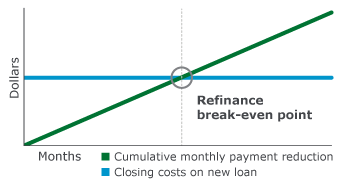Mortgage Refinancing: Figuring Out Your Options
As home values in many markets have rebounded from the crisis, the opportunity for homeowners to refinance is ever more present, especially considering how low the interest rates have been. One question consumers often ask is what their homes have to be appraised at in order to refinance their home. So let's take a look at how to figure that out.
First, it's important not to overlook the Making Home Affordable program. While you'll need to provide supporting financial documentation, there are no loan-to-value restrictions with this refinance. Because there are no loan-to-value restrictions, no value calculation is necessary. So how do you know if you qualify?
Under HARP 2, here are the requirements: If the loan is owned by Fannie Mae or Freddie Mac; the loan was delivered to either mortgage aggregator by June 1, 2009, or before; a consumer has not previously used the program; and the loan is not a FHA Loan. Within these guidelines, most homeowners are automatically eligible. First things first, homeowners can see which entity owns their loan by researching Fannie Mae's site or Freddie Mac's site.
2 Simple Ways to Run the Calculation: If you're not eligible for HARP 2, you'll be subject to standard loan-to-value guidelines for the purposes of securing a new mortgage loan. For this example, let's assume you have a conforming conventional loan -- which is a loan with a limit of $417,000 (or even as high as $625,500 in some markets).
On most homes, taking your principal balance and dividing it by .8 will give you the minimum value your house needs to be appraised at, assuming you're not interested in paying monthly private mortgage insurance (most consumers aren't, if they can avoid it). As such, the calculation does not factor in monies for closing costs. If you take approximately 1.25 percent of your loan amount and add that to your principal balance, then divide by 0.8, that can give you a better barometer of needed value -- if you plan to finance the fees. If you can cash-finance the closing costs, the 0.8 calculation remains viable.
Cash Financing Closing Costs: Using a principal balance of $301,234, take $301,234 ÷ 0.8 = $376,542 as the lowest value your house would have to appraise at in order to refinance without mortgage insurance, and paying cash for the closing costs.
Rolling Fees Into The Loan: Conversely, by taking the principle balance of $301,234 x 1.25% = $3765 (1.25 percent refinance closing costs amount is a bit high, but being conservative). $301,234 + $3765 equals a new loan amount of $305,000, rounding up. $305,000 ÷ .8 = $381,250 as the lowest value needed, rolling the fees into the loan.
Different Types of Occupancy: If the principle balance on the property is greater than $417,000, in most markets, the numbers can change based on the maximum loan limit in the county in which the property is located. For our purposes, these calculations are intended for traditional conventional financing on loans up to $417,000 (assuming you're not HARP 2 eligible).
Primary Home
• Worst-case calculation: Divide principal balance by 0.95. This is indicative of conventional 95 percent loan-to-value financing. In such a scenario, plan on having to pay mortgage insurance.
• Best-case calculation: Divide principal balance by 0.8. This is indicative of conventional 80% loan-to-value financing.
Second/Vacation Home
• Worst-case calculation: Divide principal balance by 0.9. This is indicative of conventional 90% loan-to-value financing. Expect to pay PMI.
• Best-case calculation: Divide principal balance by 0.8. This is indicative of conventional 80% loan-to-value financing.
Investment Home
• Best- and worst-case calculation: Divide principal balance by 0.8, which is indicative of conventional 80% loan-to-value financing (20% equity or more is required on investment properties, as mortgage insurance is unavailable for this kind of property).
Calculating these numbers at the start of the process can help you get a wider and more accurate range of options for refinancing, as it gives you the approximate loan-to-value to tell a loan officer when you're seeking rate and payment choices.
Follow us on Facebook


